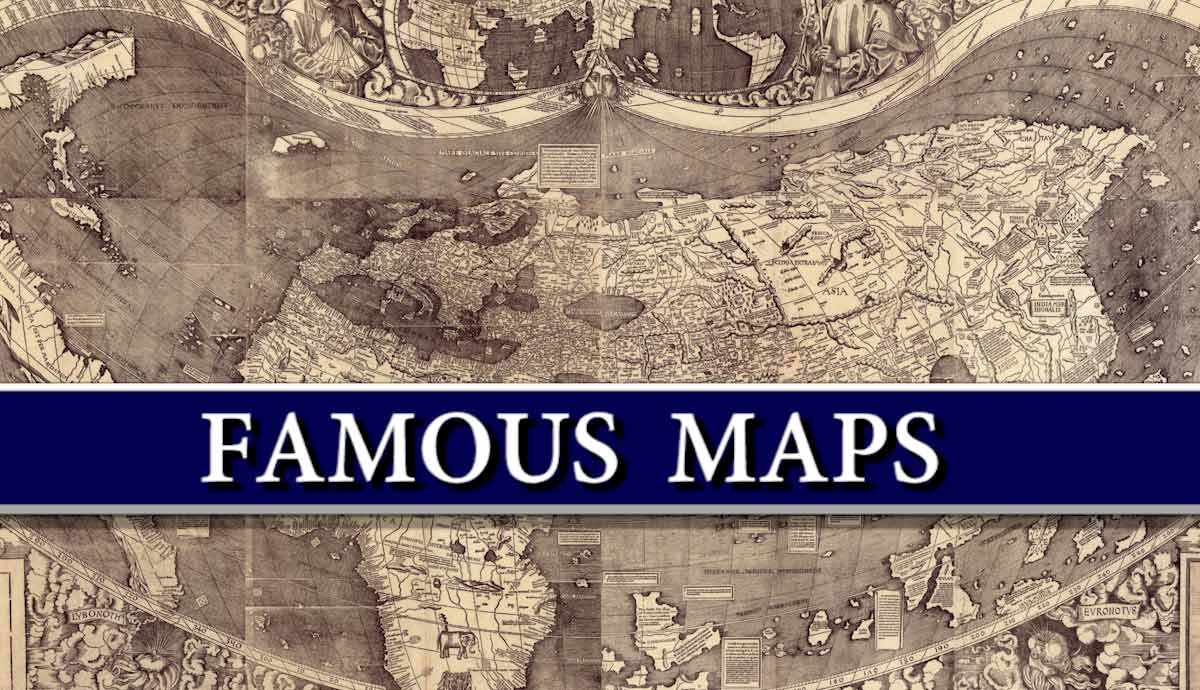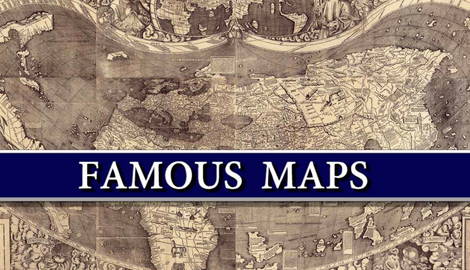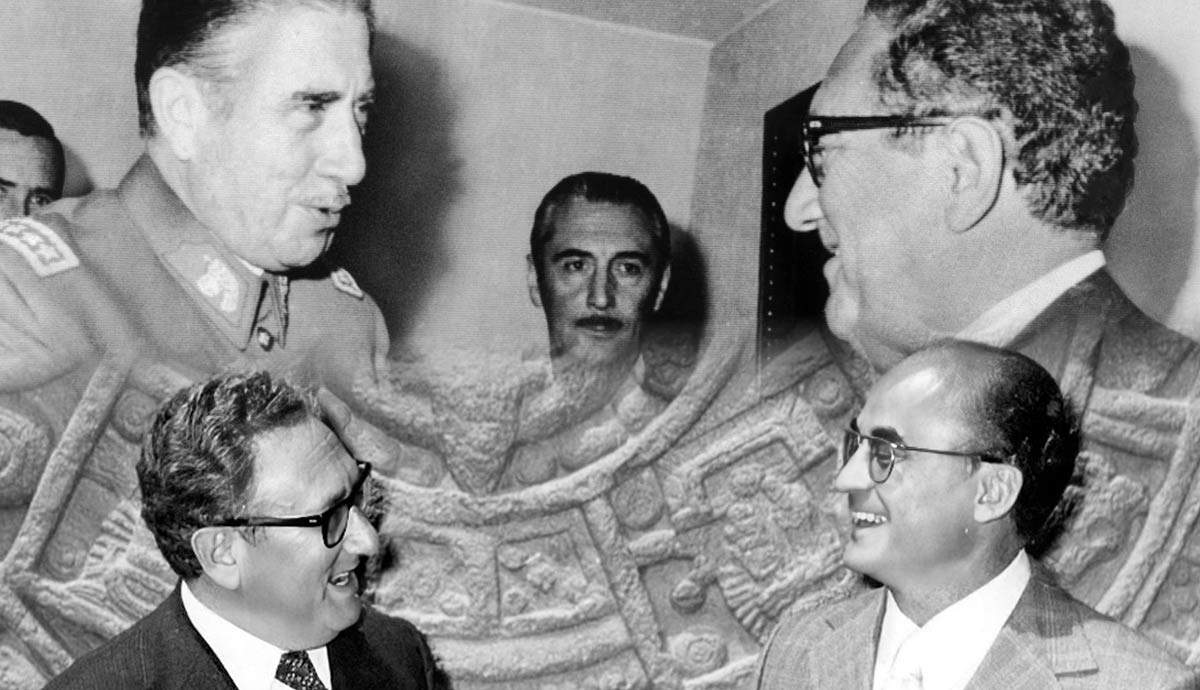
Cartography has been an incredibly useful area of knowledge that has continuously transformed our complete appreciation of our surroundings and the world at large. Likewise, maps have been fundamental in giving form to our perception of our physical reality, ranging from basic sketches to more technical and detailed true works of science and artistry. Allowing us to navigate the world, maps aid us in understanding and giving meaning to our world. The representation of our immense curiosity, thus, is greatly displayed through cartography. Maps are as transformative as the people and periods behind them. Here are five maps that demonstrate their fascinating histories and consequences.
1. Ptolemy’s Geographia (Ptolemy’s World Map)

Not to be confused with Ptolemy I, Alexander the Great’s successor and founder of the Ptolemaic Empire, Claudius Ptolemy was an ancient mathematician, astronomer, and geographer. Born in Alexandria, Egypt, under the rule of the Romans, Ptolemy is believed to have been ethnically Greek or a Hellenized Egyptian. He used both Greek and Babylonian knowledge in his work, which was extensively used or commented upon in Late Antiquity and the Middle Ages, remaining relevant even later.
Ptolemy’s world map is a title largely given to any map based on Ptolemy’s description of the known world of the Greco-Romans in the 2nd century. Thus, there are many depictions and a variety of styles. Still, they are all mostly faithful to Ptolemy’s accounts. The work said maps were based on is Ptolemy’s cartographical magnum opus, his Geographia. In it, Ptolemy makes a geographical dictionary, an atlas, and a treatise on cartography.
Originally based on the atlas created by Marinus of Tyre, Ptolemy depicts Europe, Asia, and Africa, then known as Libya. Although Ptolemy’s work consisted of proper texts and maps, no Greek manuscript survives from his time. However, his work would still be reproduced for centuries to come, influencing European and Islamic cartography well into the beginning of the modern era.
For its time, Ptolemy’s world map was greatly detailed and surprisingly accurate. Such was its value that the Roman Empire presumably benefited from it by aiding in its expansion to the East. The Romans traded throughout the Indian Ocean and even reached China, establishing contact and flows of trade.
2. Mapamundi de los Cresques (The Catalan Atlas)

Created almost at the end of the European Middle Ages in 1375, the Catalan Atlas is often considered the most important map of the medieval period. Much like other major cartographic works, the Catalan Atlas was the immediate product of its context. The atlas was created on the island of Majorca, which had a long history of seafaring and trade. Thus, there was a keen interest in perfecting the cartographic craft to aid commerce and navigation. The Majorcan cartographic school was a successful endeavor that rivaled its contemporary counterpart, the Italian cartographic school.
The Catalan Atlas depicts the known world with great detail and incredible artistry. It begins with Catalan texts and illustrations on cosmography, astronomy, and astrology. Particularly, they provide information on the tides and sailing. The rest of the document is the actual map. It depicts Europe, the Far East, North and West Africa, and Jerusalem and its surroundings, which appear at the center of the Atlas. The map is both an innovative piece and conscious of past cartographic traditions and discoveries.
The map includes a particular reference that some may be familiar with, even if the map isn’t known. Appearing on the western part of Africa, right at the bottom of the map, is the legendary ruler of the Mali Empire: Mansa Musa. He is depicted crowned, sitting on his throne while holding a golden nugget in one hand and a scepter in the other. Mansa Musa is famous for his incredible riches and is believed to be the richest man in history.
3. The Waldsemüller Map (Waldsemüller’s Universalis Cosmographia)

Martin Waldsemüller’s Universalis cosmographia is a great contestant for the top maps to have changed our perspective of the world. Often just called Waldsemüller’s map, Universalis cosmographia is a testament to major changes in understanding the world during the Age of Exploration. Based on the explorations and accounts of Florentine merchant Amerigo Vespucci, the map includes a raw depiction of the Americas and, for the first time, gives such land the name of “America.”
Waldsemüller’s map is a mappa mundi that follows the traditions of preceding cartography but adds key new elements that make it a worthy standalone piece. Originally titled “The Universal Cosmography,” according to the tradition of Ptolemy and the discoveries of Amerigo Vespucci, the map follows the ancient tradition of Ptolemy’s cartography, specifically his second projection. The title also refers to Vespucci and other explorers. Waldsemüller named the New World in honor of Vespucci, believing him to be the first to account and define said land as a new, previously unknown continent. However, Vespucci never truly expressed that what he had explored was part of a truly distinct continent. Instead, Christopher Columbus was believed to be the true discoverer, yet he himself also never thought he had reached a new continent.
Waldsemüller later corrected himself and, on a new version of his map, gave the new continent the title of Terra Incognita. He also recognized Columbus as responsible for the discovery, not Vespucci. Still, Vespucci’s legacy as the bearer of the New World’s name was greater than Columbus’. The replication of the map, alongside the familiarity with the new name, considering its likeness to other already existing terms (Asia, Europa, Africa), created the perfect conditions for adopting the name.
4. The First Atlas (Ortelius’ Theatrum Orbis Terrarum)

Although maybe not as famous as some of the other maps on this list, Abraham Ortelius’ Theatrum Orbis Terrarum is considered the first modern atlas. The atlas was first published in 1570, but Ortelius would make changes to it throughout his life, up until his death in 1598. Growing into more than 31 editions, seven languages, and more than one hundred maps, Ortelius’ atlas was greatly consequential. Decades after Ortelius’ death, Dutch cartographer Willem Blaeu continued Ortelius’ work and built his own atlas, which would reach a final version under the name of Atlas Maior, possibly the largest and most expensive book published in the 17th century.
Both Ortelius’ Atlas and the Atlas Maior are considered masterpieces of Dutch cartography. The Theatrum Orbis Terrarum consisted of a series of uniform map sheets and a supporting text bound, forming a proper book. By the last edition edited by Ortelius himself, the atlas had detailed maps of their known world, including most of Africa, the Arabian Peninsula, the Middle East, Russia, China, Southeast Asia, the Americas, and Europe. The atlas was very quickly a successful endeavor, becoming a popular item among the wealthy elites of the time.
In addition to being considered the first true modern atlas, the Theatrum Orbis Terrarum is also considered the official beginning of the Dutch Golden Age of Cartography, a period of great cartographic production and innovation. The first atlas, the use of triangulation, and the first atlas of nautical charts were all examples of successful innovation during the Dutch Golden Age. Many famous cartographers, such as Ortelius, Gerardus Mercator, and Johannes Janssonius, enjoyed great success during this period.
5. The Mercator Projection (Mercator’s 1569 World Map)

Perhaps the most recognizable map in this list, Gerardus Mercator’s 1569 World Map set in motion one of the most consequential cartographic traditions in history: the Mercator Projection. Much has been said about this map, but little is known about its creator and its first incarnation. For starters, the Mercator projection isn’t a map per se but rather a projection.
Instead of just being a standalone map, a projection is a cartographic element that precedes any two-dimensional map. Given that the world is spherical, the translation from a three-dimensional representation into a two-dimensional one requires certain transformations. These transformations are nothing more than decisions taken to portray the world in a particular manner. Mercator’s 1569 World Map, with its incredibly long complete title, “New and more complete representation of the terrestrial globe properly adapted for use in navigation,” is the first map created from this type of projection. The projection is known for inflating the size of objects away from the equator, making certain landmasses like Greenland appear much larger than they truly are.
The Mercator projection is somewhat infamous for its arguably exaggerated distortion. All three-dimensional objects will have some sort of distortion when represented on a plane. Yet the Mercator projection has been accused of being unsuitable for general world maps, biased towards the northern hemisphere, and responsible for influencing people’s worldviews. Mercator originally devised the projection to provide a uniquely favorable perspective for navigation, which it did successfully. Still, the criticisms towards the projection remain valid; its overall dominance in the 19th and 20th centuries made it difficult to escape the particular perspective provided by the projection. Ever since the end of the 20th century, the projection has lost relevancy, and most people are ultimately aware of its weaknesses.










